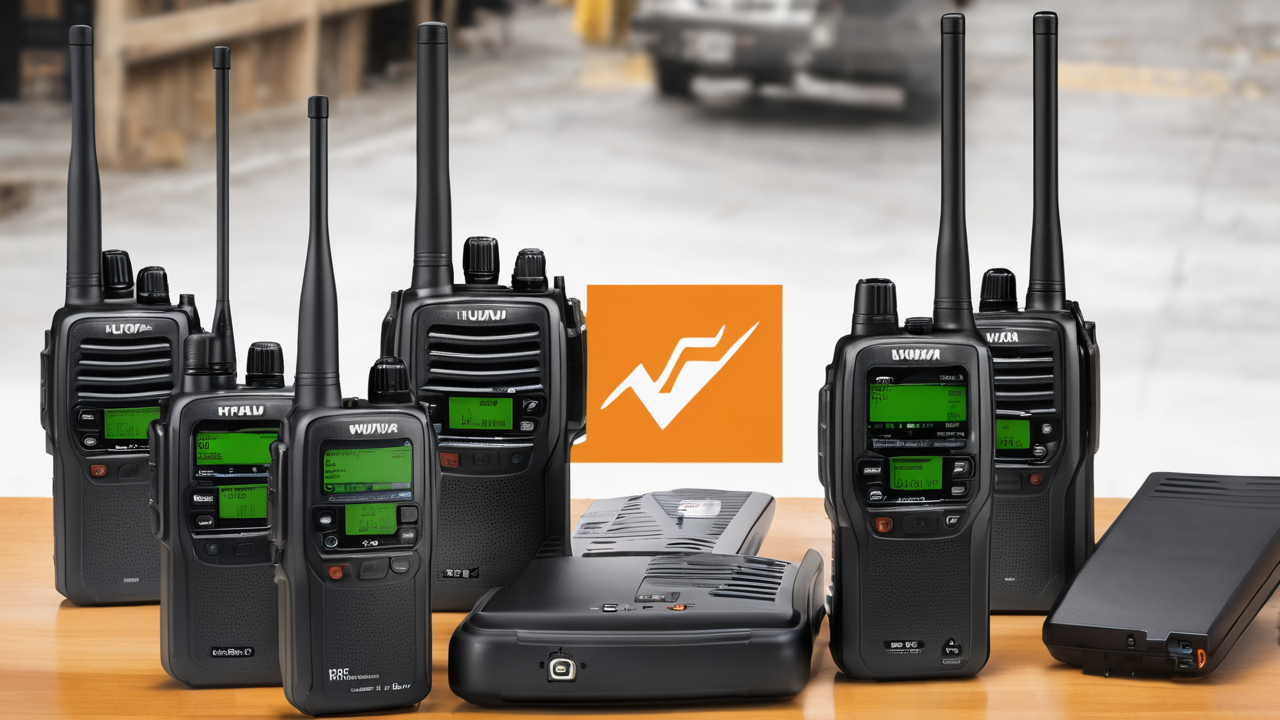Understanding the Fundamentals of Long-Range Walkie Talkies
The Technologies Behind Long-Range Communication
Long-range walkie talkies use various tech to send signals over great distances. Radio waves are key. They travel far and can pass through obstacles. Most long-range models use UHF or VHF bands.

UHF is good for urban areas. It can penetrate buildings better. VHF works well in open spaces. It can cover more ground. Some devices use both bands for versatility.
Advanced models may have digital signal processing. This helps clear up audio. It reduces background noise. Some use trunking systems to manage many users on few channels.
Repeaters can extend range even further. They receive and retransmit signals. This helps communication in large or complex areas.
Key Features to Look for in a Long-Range Walkie Talkie
When choosing a long-range walkie talkie, consider these features:
- Range: Look for devices that offer at least 25-30 miles in ideal conditions.
- Battery life: Longer is better. Some models can last 12-24 hours on a single charge.
- Durability: Seek water-resistant or waterproof options. Look for shock-resistant builds.
- Channels: More channels mean more flexibility. 16 to 22 channels is common.
- Privacy codes: These prevent interference from other users.
- Voice activation: Hands-free operation can be crucial in some situations.
- Emergency features: Look for SOS signals and weather alerts.
- Display: A clear, backlit display helps in low light conditions.
Choose based on your specific needs. Not all features are necessary for every user.
Legal Considerations in the United States
In the U.S., the FCC regulates walkie talkie use. Different rules apply to different types of radios. For personal use, FRS (Family Radio Service) radios don't need a license.
GMRS (General Mobile Radio Service) radios offer more power and range. They require a license. The license covers your whole family. It's easy to get and lasts for 10 years.
Business use often requires specific licenses. This depends on the frequency and power used. Always check current FCC rules before buying or using a walkie talkie.
Some areas have restrictions on walkie talkie use. National parks, for example, may have rules. Always respect local laws and regulations.
Top Picks for Long-Range Walkie Talkies in the U.S.
Evaluating the Best Models for Different Industries
Different industries have unique needs for long-range walkie talkies. Let's look at some top picks:

For construction, the Motorola RMU2080d is popular. It's rugged and has good range. It works well in noisy environments.
In hospitality, the Kenwood PKT-23 is a favorite. It's small and lightweight. It has clear audio and good battery life.
For outdoor adventures, the Midland GXT1000VP4 is great. It's waterproof and has NOAA weather alerts. It also has a good range for its size.
In warehouses, the Hytera PD562 is often used. It has both analog and digital modes. It's durable and has good coverage indoors.
For security teams, the Motorola XPR 3300e is a top choice. It has enhanced audio and long battery life. It also has advanced safety features.
Consumer vs. Professional Grade Walkie Talkies: A Comparison
Consumer and professional walkie talkies differ in several ways. Here's a quick comparison:
Consumer grade:
- Cheaper
- Shorter range (usually up to 30 miles)
- Fewer features
- Less durable
- Often use FRS or GMRS frequencies
- No license needed for FRS
Professional grade:
- More expensive
- Longer range (can exceed 30 miles)
- More features (like encryption)
- Very durable
- Use various frequencies
- Often require licenses
Professional models offer better performance. They're built for heavy use. Consumer models are good for casual use. They're easier to use and more affordable.
How to Determine the Best Walkie Talkie for Your Needs
Choosing the right walkie talkie depends on your specific needs. Consider these factors:
- Range: How far do you need to communicate?
- Environment: Urban or rural? Indoors or outdoors?
- Durability: Will it be exposed to harsh conditions?
- Battery life: How long do you need it to last?
- Features: What special functions do you need?
- Budget: How much can you spend?
- Number of users: How many people will be on the network?
- Legal requirements: Do you need a license?
Make a list of your must-have features. Compare this to available models. Don't overpay for features you won't use. But don't skimp on essential functions either.
Test devices if possible before buying. This ensures they meet your needs in real-world conditions.
Selecting and Implementing Your Long-Range Walkie Talkie
Best Practices for Choosing a Long-Range Walkie Talkie
When selecting a long-range walkie talkie, follow these best practices:

- Define your needs clearly. Know your range, durability, and feature requirements.
- Research thoroughly. Read reviews from trusted sources and users.
- Compare multiple models. Don't settle for the first option you find.
- Consider future needs. Choose a device that can grow with your requirements.
- Check compatibility. Ensure it works with your existing equipment if needed.
- Verify legal compliance. Make sure the device meets FCC regulations.
- Test before buying in bulk. Try a few units before making a large purchase.
- Consider total cost of ownership. Factor in batteries, accessories, and maintenance.
Remember, the best device is one that fits your specific needs. Don't be swayed by fancy features you won't use.
Integration with Other Communication Systems
Modern long-range walkie talkies can often integrate with other systems. This enhances their usefulness. Here are some integration possibilities:
- Smartphone apps: Some models connect to phones for extended features.
- GPS systems: Many high-end units have built-in GPS for location tracking.
- Computer networks: Some can connect to IP networks for wider communication.
- Vehicle systems: Integration with in-vehicle communication systems is common.
- Bluetooth devices: Headsets and other accessories can connect via Bluetooth.
When choosing a system, consider how it will work with your existing tech. Seamless integration can greatly improve efficiency.
Training and Maintenance for Long-Range Walkie Talkie Users
Proper training and maintenance are crucial for effective use of long-range walkie talkies. Here are some key points:
Training:
- Teach proper radio etiquette and protocols.
- Explain all features and how to use them effectively.
- Practice in real-world conditions.
- Cover troubleshooting basics.
Maintenance:
- Clean devices regularly, especially after exposure to dust or moisture.
- Check and replace batteries as needed.
- Inspect antennas and other external parts for damage.
- Update firmware when available.
- Store in a cool, dry place when not in use.
Regular training refreshers can help maintain good practices. Proper maintenance extends the life of your devices. It also ensures they're ready when you need them most.
Remember, even the best walkie talkie is only as good as its user. Invest in training to get the most out of your equipment.


